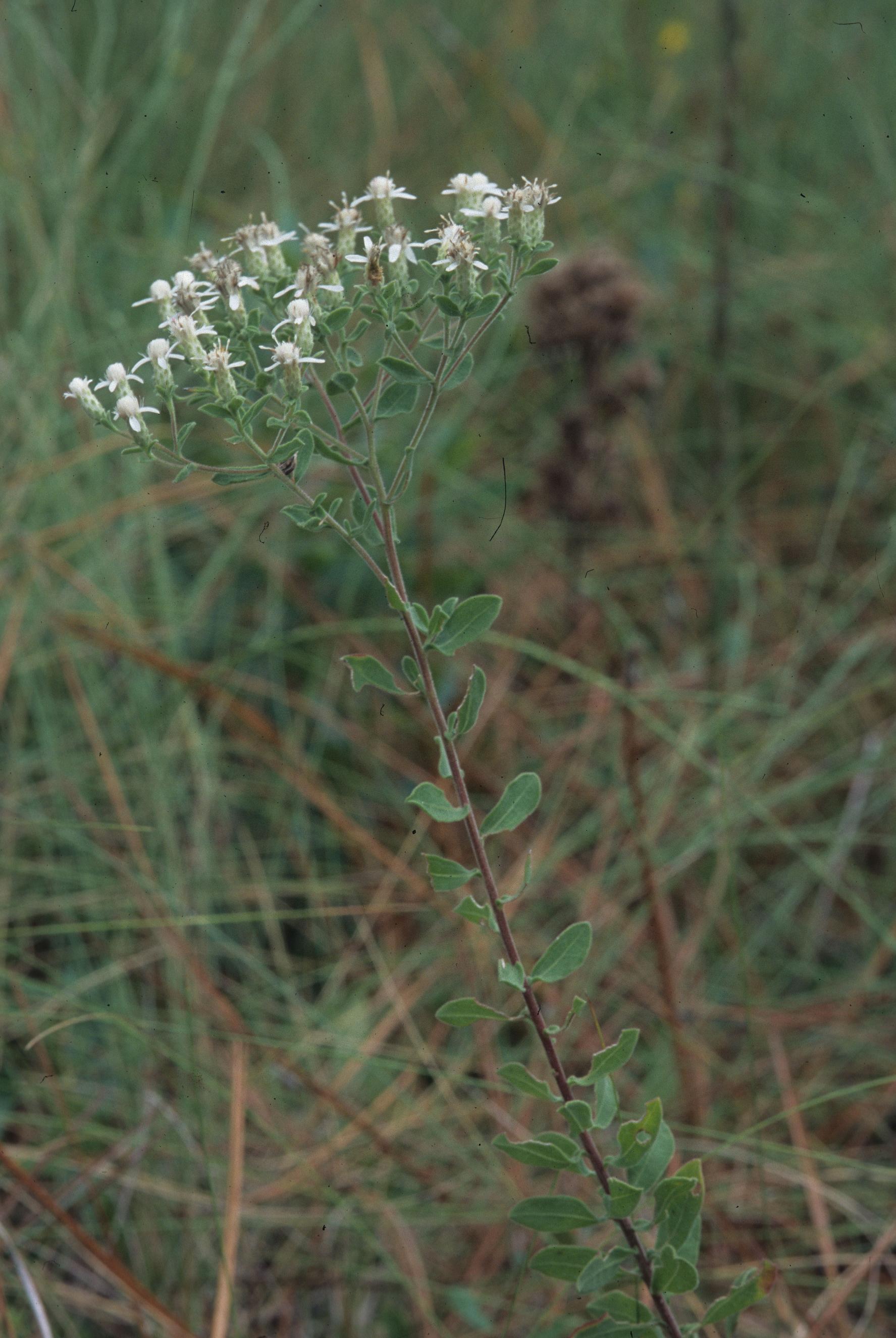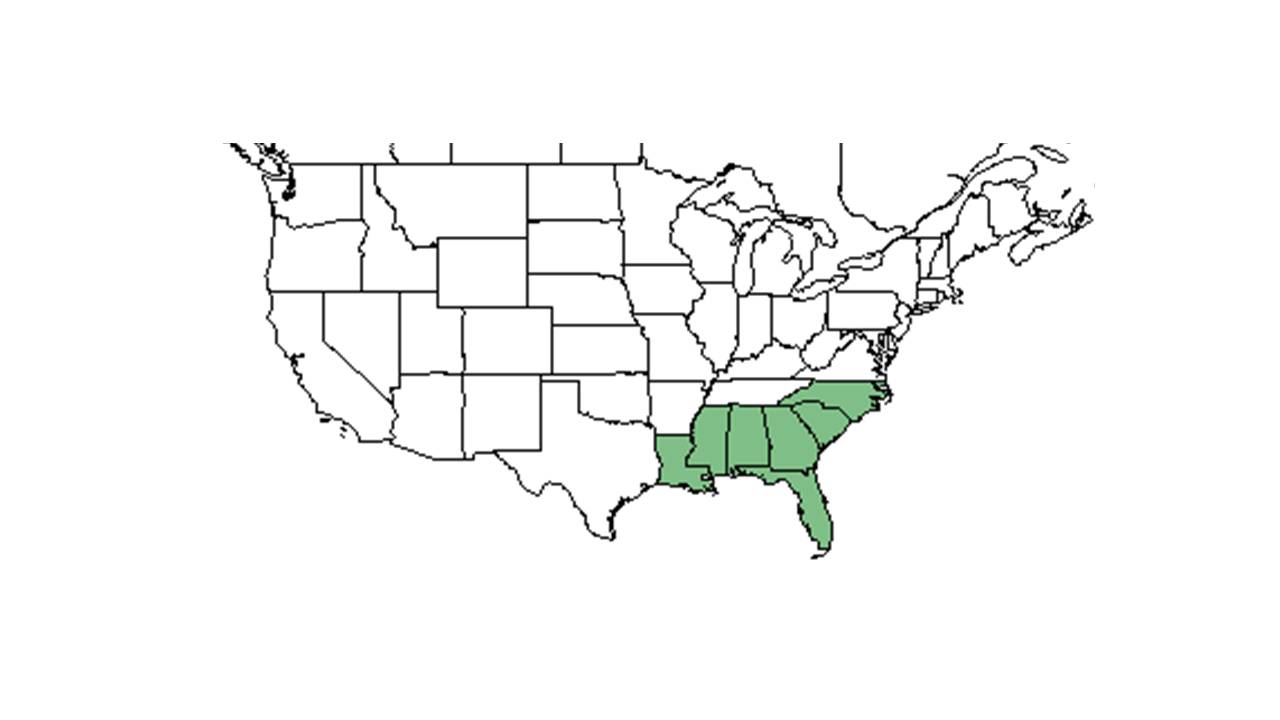Difference between revisions of "Sericocarpus tortifolius"
KatieMccoy (talk | contribs) |
KatieMccoy (talk | contribs) |
||
| Line 27: | Line 27: | ||
==Ecology== | ==Ecology== | ||
===Habitat=== <!--Natural communities, human disturbed habitats, topography, hydrology, soils, light, fire regime requirements for removal of competition, etc.--> | ===Habitat=== <!--Natural communities, human disturbed habitats, topography, hydrology, soils, light, fire regime requirements for removal of competition, etc.--> | ||
| + | In the Coastal Plain in Florida and Georgia, ''S. tortifolius'' can be found in longleaf pine-wiregrass communities, flat pinelands, burned slash pines, longleaf pine-turkey oak, upland sand ridges, annually burned upland pines, dry pine barrens, live oak woodlands, wet flatwoods, open oak-hickory forests, longleaf pine savannas, and cabbage palm mixed hardwood hammocks (FSU Herbarium). It can also occur in clobbered longleaf pine forests, margins of old fields, sandy fallow fields, along highways,vacant lots, roadsides, and pine plantations. Soil types include loamy sand, loam soils and sandy loam (FSU Herbarium). | ||
| + | |||
| + | Associated species include ''Andropogon, Schizachyrium, Pityopsis, Solidago, Balduina'', and ''Sporobolus'' (FSU Herbarium). | ||
| + | |||
===Phenology=== <!--Timing off flowering, fruiting, seed dispersal, and environmental triggers. Cite PanFlora website if appropriate: http://www.gilnelson.com/PanFlora/ --> | ===Phenology=== <!--Timing off flowering, fruiting, seed dispersal, and environmental triggers. Cite PanFlora website if appropriate: http://www.gilnelson.com/PanFlora/ --> | ||
===Seed dispersal=== | ===Seed dispersal=== | ||
Revision as of 14:15, 7 October 2015
| Sericocarpus tortifolius | |
|---|---|

| |
| Photo was taken by Gil Nelson | |
| Scientific classification | |
| Kingdom: | Plantae |
| Division: | Magnoliophyta – Flowering plants |
| Class: | Magnoliopsida – Dicotyledons |
| Order: | Asterales |
| Family: | Asteraceae ⁄ Compositae |
| Genus: | Sericocarpus |
| Species: | S. tortifolius |
| Binomial name | |
| Sericocarpus tortifolius (Michx.) Nees | |

| |
| Natural range of Sericocarpus tortifolius from USDA NRCS Plants Database. | |
Common name: Dixie whitetop aster
Contents
[hide]Taxonomic notes
Description
A description of Sericocarpus tortifolius is provided in The Flora of North America.
Distribution
Ecology
Habitat
In the Coastal Plain in Florida and Georgia, S. tortifolius can be found in longleaf pine-wiregrass communities, flat pinelands, burned slash pines, longleaf pine-turkey oak, upland sand ridges, annually burned upland pines, dry pine barrens, live oak woodlands, wet flatwoods, open oak-hickory forests, longleaf pine savannas, and cabbage palm mixed hardwood hammocks (FSU Herbarium). It can also occur in clobbered longleaf pine forests, margins of old fields, sandy fallow fields, along highways,vacant lots, roadsides, and pine plantations. Soil types include loamy sand, loam soils and sandy loam (FSU Herbarium).
Associated species include Andropogon, Schizachyrium, Pityopsis, Solidago, Balduina, and Sporobolus (FSU Herbarium).
Phenology
Seed dispersal
Seed bank and germination
Fire ecology
Pollination
The following Hymenoptera families and species were observed visiting flowers of Sericocarpus tortifolius at Archbold Biological Station (Deyrup 2015):
Halictidae: Lasioglossum nymphalis
Use by animals
Diseases and parasites
Conservation and Management
Cultivation and restoration
Photo Gallery
References and notes
Deyrup, M.A. and N.D. 2015. Database of observations of Hymenoptera visitations to flowers of plants on Archbold Biological Station, Florida, USA.